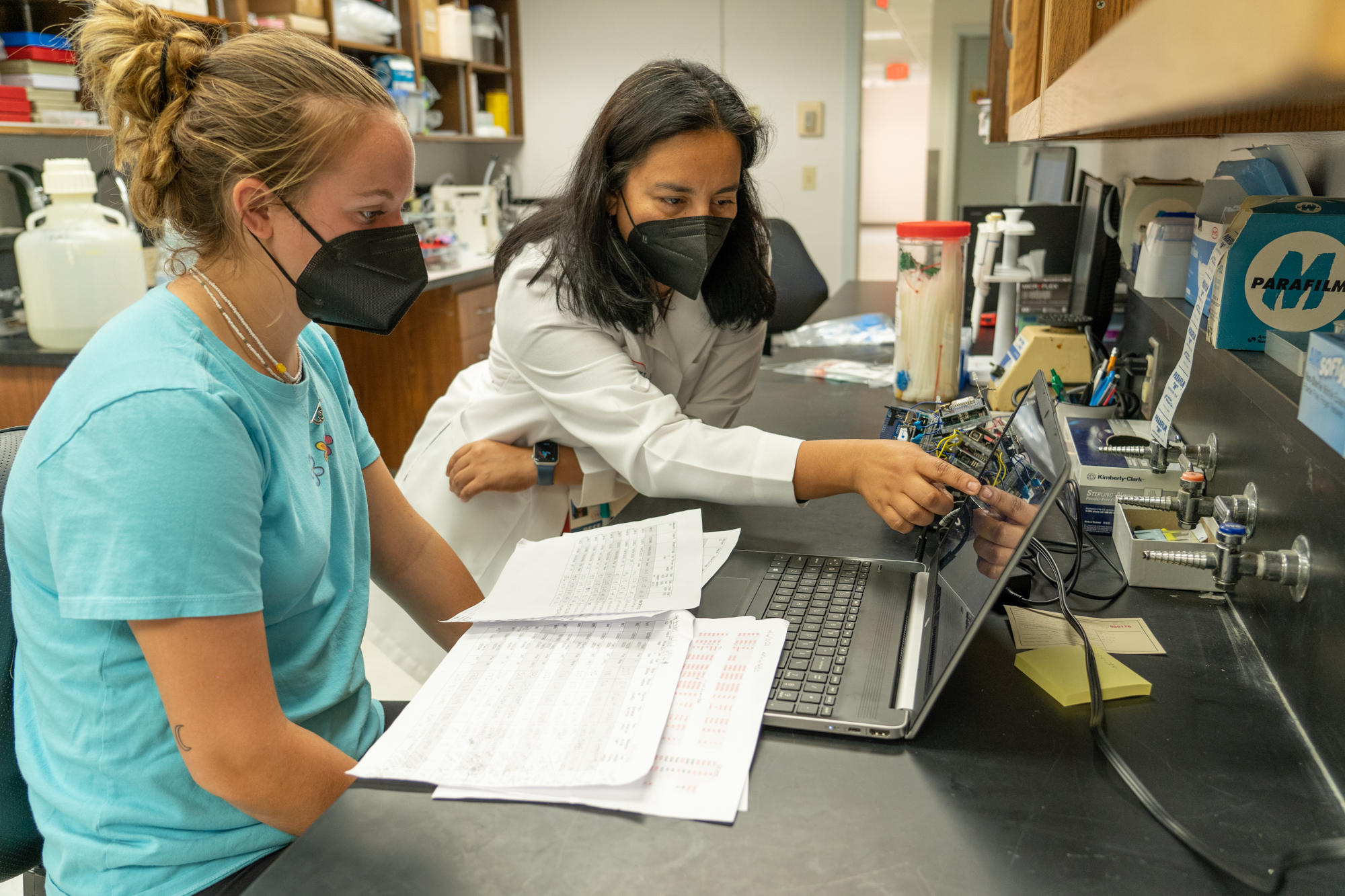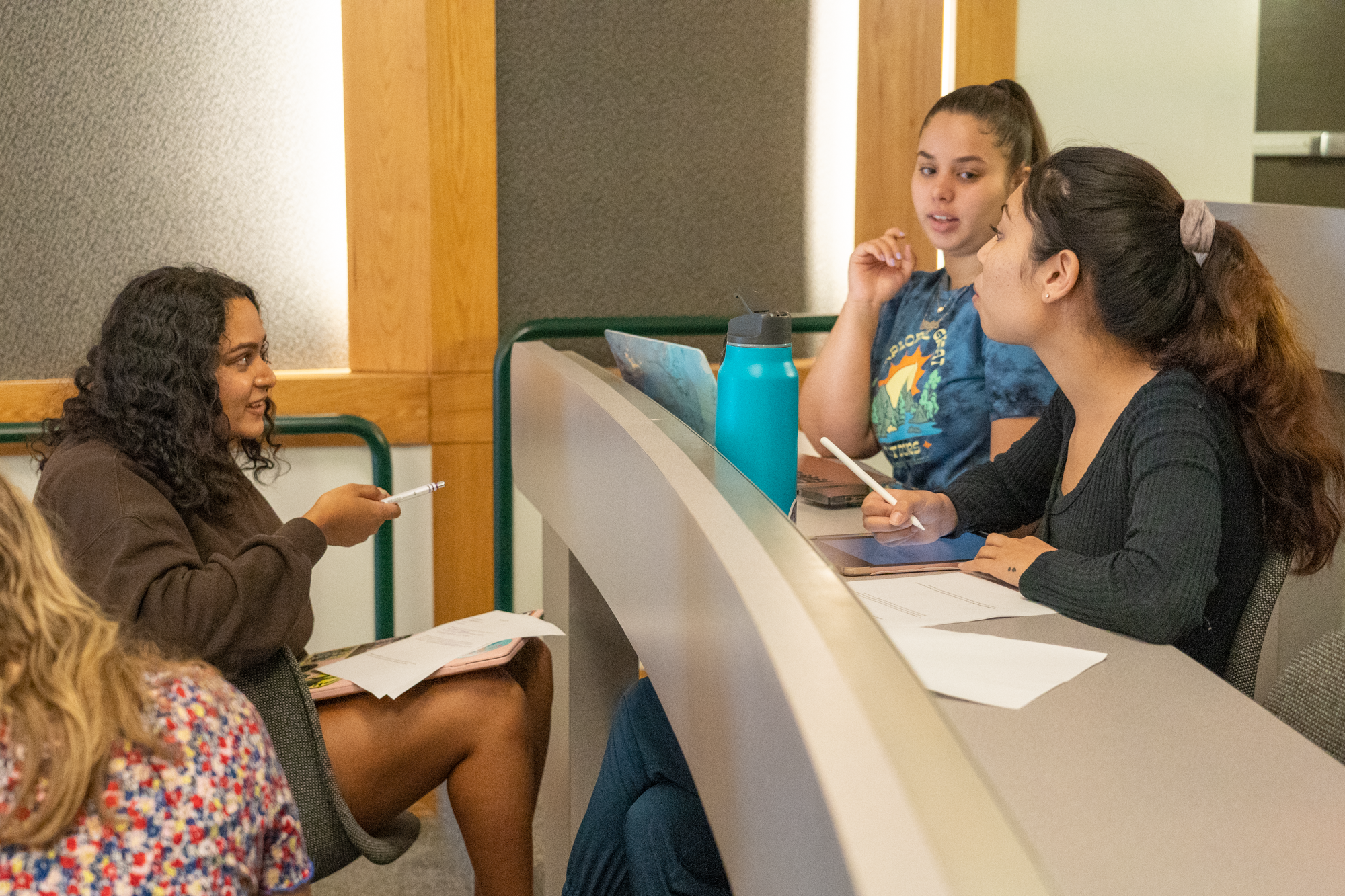
By Michelle Jaffee; Photos by Jackie Hart
When admissions committees for graduate neuroscience programs review applications, one differentiating factor is whether the applicant has conducted laboratory research as an undergrad. At the University of Florida, the Summer Neuroscience Internship Program, known as SNIP, provides such an opportunity.
Since its inception in 2016, the annual paid internship has grown from an initial class of 10 to include 16 students this year. They come from many different institutions and deploy into active labs in UF’s McKnight Brain Institute, undertaking projects that could yield an authored publication, scientific poster or simply an experience to build upon.
“The end result of your experiments is not the key factor,” said Jeremy McIntyre, Ph.D., director of SNIP and an assistant professor of neuroscience. “For me, the program is a success if you go to an interview and can explain the why of your experiment, the how and, more importantly, what you do next. We’re looking for someone who can take a negative result and say, ‘this is what I need to do differently next time.’ ”
SNIP is designed to encourage applications from first-generation students and those from underrepresented backgrounds as well as those interested in pursuing advanced degrees in neuroscience, biomedical research or neuromedicine. International students are eligible to apply as long as they are already undergraduates at U.S. institutions.
“This program has the potential to move the needle on diversity of the neuroscience community as a whole,” McIntyre said.

Funded by the McKnight Brain Institute, the UF Department of Neuroscience, UF’s Center for Cognitive Aging and Memory and the Karen Toffler Charitable Trust, SNIP has served a total of 87 students, many of whom have gone on to doctoral or master’s programs at UF and elsewhere, research programs at the National Institutes of Health or positions as research technicians. Projects involving SNIP students have led to the publication of 11 scientific papers, with many more in progress towards publication.
“In addition to helping students acquire technical research skills, SNIP is aimed at promoting career development,” said SNIP founding director Sara Burke, Ph.D., associate director of UF’s Center for Cognitive Aging and Memory. “We believe that the professional development workshops and seminars that have been created to help students with applications, presentations and interview skills are one reason why so many of our SNIP alumni successfully go on to advanced degree programs.”
This year, the highly competitive program had a 10% acceptance rate and included five UF undergraduate students and 11 from other institutions: University of Puerto Rico, San Juan; University of Puerto Rico, Aguadilla; Virginia Tech; University of Hawaii at Manoa; Embry Riddle Aeronautical University; Hollins University; Nova Southeastern University; Sewanee: The University of the South; The College of Wooster; Washington and Jefferson College; and Royal Holloway University of London.
During the 10-week program, from May until August, students gain experience in labs that use techniques ranging from rodent models of disease to human neuroimaging to analysis of spinal cord tissue. Participants attend mock grad school interviews, write abstracts and present their findings to peers and mentors via Zoom and in person on SNIP research celebration day.
“It’s been great to get all the extra perks that come with SNIP — the stipend, but also the connections and networking and meeting other people from around the U.S. and outside the U.S., too,” said Sophia Moret, a rising fourth-year biology major at UF.

Moret is working in the lab of Karina Alviña, Ph.D., assistant director of SNIP and a research assistant professor of neuroscience. There, she is learning about fundamental cellular physiology of the brain and Alviña’s research focus: how specific brain regions key to learning and memory could be altered by lifestyle factors such as diet, exercise and stress.
Jillian Murray, a neurobiology major and psychology minor at The College of Wooster in Ohio, said the mentorship offered through SNIP has made a big impact.
“They do a lot of developmental workshops with us, not just lab work, which I think is really unique,” she said. “We get to see a lot of talks and seminars, and they do a lot of work on prepping us for grad school. They talk to us a lot about how to get grants and fellowships and funding for grad school.”
Mentorship is key for participants and faculty members alike. The SNIP leadership team includes postdocs, research faculty members and junior faculty members. “For postdocs and grad students, if they want academic careers, there is a real benefit in mentoring students,” McIntyre said.

The SNIP interns also offer extra hands in the lab to get experiments done.
Lucas Budd, a rising fourth-year biomedical engineering major at UF, and classmates decided to build a computational model of the mechanism of neuroplasticity in breathing, which is the scientific focus of his mentor, Gordon Mitchell, Ph.D., director of UF’s Breathing Research and Therapeutics Center.
Budd, who plans to apply to M.D.-Ph.D. programs, is also leading a neuroanatomical study that could set the stage for the next level of developments in understanding of that neuroplasticity, Mitchell said.
“For M.D.-Ph.D. programs, applicants need to show they have some understanding of what the research means, and they need to show they have some dedication to it,” Mitchell said. “These summer projects help demonstrate that commitment and understanding on their part.”

Twenty-seven past SNIP participants are now enrolled in Ph.D. programs, including nine who have returned to UF to pursue a doctorate in neuroscience.
Among them is Jake Boles, a Ph.D. candidate and graduate research assistant in the lab of Malú Gámez Tansey, Ph.D., co-director of UF’s Center for Translational Research in Neurodegenerative Disease.
“Especially coming from a tiny liberal arts college, the highlight of SNIP was I was able to work at a fast pace in a high-caliber research setting,” said Boles, who shadowed a postdoc and ran side-by-side assays in the lab of Tom Foster, Ph.D., a professor of neuroscience. “It was the hands-on experience and seeing the whole process of what it’s like to be a scientist at a place like this — that’s what did it for me.”













